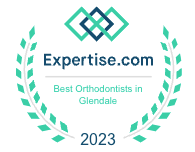Most people associate sparkling white, even teeth with beauty and health, but a lot of people aren’t fortunate enough to have perfect teeth. If you’ve never had orthodontic treatment, but always suspected that it could help you, it is time to consider braces. However, it’s understandable that people put off having braces, both due to the inconvenience of caring for them and the length of time. These aren’t reasons to avoid braces, however, because today there are several orthodontic options available. In actuality, having braces today is a lot less stressful than you would think. So how do you tell whether your teeth could benefit from braces? Some of the answers to this question are in the list below.
Crooked or crowded teeth
You can refer this condition as malocclusions. Specifically speaking teeth that look like they are leaning sideways, are overlapping each other, or that significantly protrude farther out than the surrounding teeth. Braces can treat the most popular concern of people; crowded teeth. A good way to decide if your teeth are overcrowded is by flossing your teeth. If you have trouble getting the floss between your teeth, they’re more than likely grown in too close together. Malocclusions make it difficult even for dental professionals to clean teeth properly, leading to a buildup of plaque and causing excessive enamel wear, tooth decay, cavities and gum disease.
Teeth that are too far apart
Overcrowding isn’t the only scenario that can cause dental problems. If you have large gaps between your teeth, teeth that are proportionally too small, or missing teeth, it can have a damaging effect on the functionality of your bite and jaw. Spacing is another common dental problem addressed by braces.
Misaligned bite
When you bite down, if your teeth don’t fit/align together, you have a misaligned bite. If your lower and upper teeth protrude significantly past others or there’s a sizeable space between your upper and lower teeth, you probably have bite problems that can (and should) be corrected with braces. When a person’s bite is misaligned, the chances of having a buildup of decaying food particles and plaque between and on teeth increase. This plaque and rotting food can result in periodontal disease, dental abscesses, gingivitis and eventual tooth loss. Misaligned bites can also make it difficult to chew, leading to sore jaws and gastrointestinal discomfort. Misalignment in the jaws can also strain and tighten muscles, leading to recurrent headaches.
Look for facial imbalances
Teeth that don’t align abnormally can cause a facial imbalance, meaning that some of the facial features aren’t asymmetry with the others. This is an issue that can be remedied by orthodontic treatment.
Look for issues that aren’t obvious
Other conditions that aren’t as obvious as the others listed here include grinding or clenching your teeth, mouth breathing and not being able to comfortably close your lips.
Having a beautiful, healthy smile isn’t the only reason to get braces. Well-aligned teeth and a better bite make maintaining the health of your teeth easier, keep you from having trouble eating and even speaking and help prevent other potential health problems. All great reasons to get braces.



